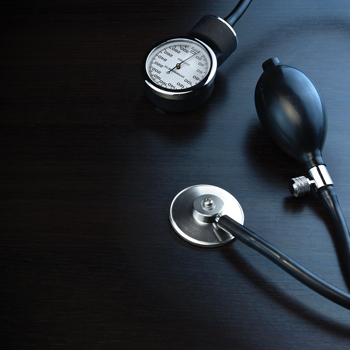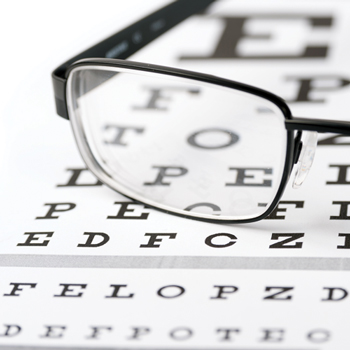New BP guideline seeks earlier intervention
Recategorized, lower thresholds might give physicians effective new weapons in the fight against hypertension, but some contend that it's premature to change clinical practice.
Will the new guideline from the American College of Cardiology and American Heart Association (ACC/AHA) spur patients into making better lifestyle choices or instead lead them too quickly to medication? That may depend on whether physicians' reactions impact hypertension discussions or patient management, according to experts.
The guideline, released in November 2017, was the first comprehensive update of the 2003 JNC 7 guideline since the JNC 8 guideline released in 2015, which recommended a systolic target of 150 mm Hg for adults over age 60 years and 140 mm Hg for younger adults. The latest updates are making waves primarily because they eliminate the category of prehypertension and redistribute and rename blood pressure (BP) stages as follows:
- normal, less than 120/80 mm Hg
- elevated, systolic 120-129 mm Hg and diastolic less than 80 mm Hg
- stage 1 hypertension, systolic 130-139 mm Hg or diastolic 80-89 mm Hg
- stage 2 hypertension, systolic at least 140 mm Hg or diastolic at least 90 mm Hg
- hypertensive crisis, systolic over 180 mm Hg and/or diastolic over 120 mm Hg

The recommendations focused on systolic measurement since diastolic discussion is based more on older studies and expert opinion and thus involves a weaker class of recommendation, said Paul K. Whelton, MD, MSc, chair of the ACC/AHA guideline writing committee for prevention, detection, evaluation, and management of high blood pressure.
He and other proponents say the recategorized thresholds will give physicians effective new weapons in the fight against hypertension. The lower numbers, they say, will start the conversation about managing the risks of hypertension earlier, thus getting a jump start on prevention. As awareness increases, they argue, so too may adherence to lifestyle modification and medication for those with high cardiovascular risk.
However, others are not all in. They contend it's premature to change practice since one of the major trials that influenced the recommendations, SPRINT (Systolic Blood Pressure Intervention Trial), was large but limited. It included only patients over age 50 years who were already at increased cardiovascular risk and had good BP control on medication as well as ideal BP measuring; it did not include patients with diabetes.
That could disproportionately affect younger patients who were not studied and yet provides no guidance on how the new guideline could impact those patients, said a recent Ideas and Opinions piece about the ACC/AHA guideline authored by Jordana B. Cohen, MD, MSCE, and Raymond R. Townsend, MD, and published on Dec. 5, 2017, in Annals of Internal Medicine. In addition, there is some concern that the guideline might encourage patients to look to medication too early or, conversely, to be skeptical of recommendations that seem to point them to drugs sooner.
Moreover, if the new recommendations are applied to physician performance metrics that can determine bonuses and quality report cards, they could lead to blanket overprescribing rather than individualized, nuanced clinical judgment, said Devan L. Kansagara, MD, FACP, a member of ACP's Clinical Guidelines Committee.
He pointed out that the new guideline is at odds with that issued just last year by the American College of Physicians and American Academy of Family Physicians (ACP/AAFP). Those recommendations also considered the results of SPRINT but did not find enough evidence to support lower treatment targets given the potential harms of side effects, he said. He and other members of ACP's Clinical Guidelines Committee coauthored an editorial published by Annals of Internal Medicine on Jan. 23 detailing these and other concerns with the ACC/AHA guideline.
It's up to physicians, especially primary care physicians, to clarify the new categories and explain the options, including pharmacologic treatment, which haven't changed, said David J. Becker, MD, associate director of the preventive and integrative heart program at Temple Heart & Vascular Institute in Philadelphia and a cardiologist with Temple Physicians, Inc., in Flourtown, Pa.
“It's important to keep the conversation focused on more than how to medicate people, but on [getting] blood pressure down,” he said. “We should reassure patients that guidelines are just a guide. We want to find a way to get your pressure down.”
A new label
Just the idea of now labeling nearly one-half of the U.S. adult population (46%) as having high blood pressure is controversial.
Dr. Kansagara said there's no evidence to show whether the new label will be more effective in instigating lifestyle change. But he said labeling is known to have a negative impact.
“Studies say there's real harm to being labeled as having a disease when it comes to functional status and economic outcomes. It's not something we should take lightly,” said Dr. Kansagara, associate professor of medicine at the VA Portland Health Care System in Oregon.
Dr. Becker said reclassifying patients may give them a push toward healthier habits but can also push them toward medication.
“We've reclassified half of America as possibly needing pharmaceuticals,” he said, noting that the first patient he saw after the guideline came out suspected that it had been influenced by pharmaceutical companies. “As we treat more and more patients with medications … they think all we want to do is push drugs on them.”
Despite those concerns, however, relabeling will fix the problem with existing terms, said Dr. Whelton, who is also the Show Chwan Professor of global public health at Tulane University School of Public Health and Tropical Medicine in New Orleans.
“If patients have stage 1 hypertension, we have unquestionable evidence from many studies that they have double the risk for heart attack and stroke versus those with a normal [lower BP],” he said. “But when you use ‘prehypertension,’ that level of risk may not be obvious to a patient.”
As a result, the guidelines committee split that category into two relabeled categories, “elevated” and “stage 1 hypertension,” he explained.
He noted that although the number of people labeled as hypertensive will increase 14%, to 46% of adults over age 18 years, compared to the previous number as measured by JNC 7, the percentage recommended for drug therapy will increase 2% or less.
Weighing a change
Nephrologist Keith C. Norris, MD, FACP, sees the upside of moving the bar for his community work where BP control is a struggle.
“I like the fact that we're opting to be a little more aggressive in pushing for a lower blood pressure,” said Dr. Norris, a professor of medicine at the University of California, Los Angeles, division of general internal medicine and health services research.
When he gives patients the BP goal of 140/90 mm Hg, patients feel 150/100 mm Hg is OK because it's close, he said.
“Now I think if I say 130/80—even if we don't get there—hopefully patients will be between 130 and 140. That's better than 150,” he said.
He also said SPRINT reinforces the positive impact of doing a better job motivating patients to adhere to their medications, diet, or other lifestyle recommendations.
“My takeaway is I want to try to get BP down to 130/80, but I don't want to do it by giving gobs and gobs of medication,” he said.
That's the balance that physicians will have to find, said Dr. Becker. He said he's concerned that extrapolating the SPRINT results to patients with fewer risk factors may result in overtreating and moving too quickly to medications.
Despite the broad brush of the ACC/AHA guideline, the bottom line is that physicians need to individualize care, said Samuel J. Mann, MD, professor of clinical medicine at New York Presbyterian Hospital/Weill-Cornell Medical College in New York City and a hypertension specialist.
For example, he said he would monitor a thin, nonsmoking, nondiabetic patient with systolic blood pressure in the 130s for longer than another patient who had other cardiovascular risk factors before adding a medication. He might wait up to six months, he said, since the patient is most likely at risk for events decades in the future but would probably be taking any prescribed medication indefinitely once it's initiated. Dr. Whelton, in turn, noted that the 2017 ACC/AHA guideline does not recommend antihypertensive drug therapy in adults with stage 1 hypertension who are at low risk for cardiovascular disease (CVD).
Other concerns
While the ACP/AAFP guideline recommended treating adults ages 60 years and older with persistent systolic blood pressure at or above 150 mm Hg to reduce the risk of stroke, cardiac events, and possibly mortality, the committee found inconsistencies among trials that did not support the lower treatment targets, said Dr. Kansagara.
“ACP would advocate that if BP performance measures are used, that performance metrics stick to 150 at a broad population level,” he said. “We don't disagree that some patients should be considered for a lower target. It's a matter of degree and breadth of application.”
Concern about comorbid conditions and medication side effects also affected the ACP/AAFP guideline recommendations. Lower treatment targets may increase risk of syncope, symptomatic hypotension, and medication burden, especially for older patients already taking medications for other conditions, he said.
Those concerns have affected Dr. Becker's treatment decisions. “I've had a lot of older patients pass out or become lightheaded” from medication, he said. He said he makes decisions based on the tradeoffs. For some patients, he said, “The risk of falling is higher than the risk of mild hypertension.”
SPRINT patients took their blood pressure readings under ideal circumstances, not necessarily what's done or even possible in busy offices, Dr. Kansagara said. Having patients take blood pressure readings in the recommended manner at home would help diagnose and treat high blood pressure, he said. (See sidebar, “Getting the numbers right.”)
Another concern is the sheer size of the new guideline—481 pages. Dr. Whelton acknowledged that as a legitimate criticism but said the length reflects the process' rigor, the extensive literature review involved, and the guideline's comprehensiveness. He said the guideline was easy to navigate and suggested that physicians use the relevant sections and subsections to quickly find specific guidance.
Practice tips
The discussion is easy when a patient comes in with a systolic reading of 150 mm Hg and a high cardiovascular risk profile, said Dr. Norris. He puts that patient on medication to avoid risk.
For patients with stage 1 hypertension, he said, treat with lifestyle changes. If the reading is 135 mm Hg systolic, use the opportunity to educate. Say, “Your pressure gets higher as you get older. So now is the time to make changes so you don't end up on medications,” Dr. Becker said.
The AHA/ACC guideline recommends screening for secondary causes for new-onset or uncontrolled hypertension, Dr. Whelton advised. In about 90% of adults with new-onset hypertension, the high blood pressure is a consequence of poor diet and inadequate physical activity. Lifestyle modification is a core recommendation for all adults with hypertension. In those with stage 2 hypertension, antihypertensive drug therapy is also recommended.
It's more complicated when a patient fits the new stage 1 category. Dr. Whelton advised first calculating cardiovascular risk in patients who have not yet had a cardiovascular event. He said typically 30% of those patients will be high risk because, for example, they are diabetic, have chronic kidney disease, or are over age 65 years. Antihypertensive drug therapy is recommended, in addition to lifestyle modification, in adults with stage 1 hypertension who are at high risk for cardiovascular disease.
For a patient with a systolic reading of 140 mm Hg, here are recommendations from experts on finding the best individual approach:
- Don't jump to conclusions. For example, don't say “You have hypertension” based on a single reading. Instead, ask the patient to take additional blood pressure readings at home (see sidebar, “Getting the numbers right” on page 14).
- Don't rush to medications. Say, “We're not talking about putting you on medications today, but here are the benefits of weight control, exercise, cutting salt, and perhaps seeing a dietician to help you do that.”
- Don't aim for perfection. Avoid making a change for a millimeter or two, cautioned Dr. Mann. “Don't put a patient on a sixth medication to lower their systolic pressure from 133 to 129,” he explained.
- Don't mince words. Have a frank discussion with patients to let them know you're a team working to achieve a blood pressure goal, improve health, and reduce risk for heart attack and stroke.
- Don't forget the details. Point patients to a Mediterranean or DASH diet. Recommend 50 to 150 minutes of aerobic exercise per week such as brisk walking, running, swimming, or cycling. Suggest reducing alcohol intake. Men with high BP should have two or fewer standard drinks per day, women one or fewer. Focus on which of these issues is the biggest problem.
- Don't miss a chance to start a dialogue. For the patient who thinks the new guideline is a way to prescribe more drugs, say, “I can see how you feel that way, but I really want to encourage you to make lifestyle changes to get off medications. The time to do it is now before you gain 20 pounds or your blood pressure gets even higher and I have to put you on medications. I can only point you in the right direction.”
- Don't wait for a crisis. If patients make changes in diet and their BP is still elevated in two to three weeks, or if they cannot make the lifestyle changes within a few months, consider drug therapy. “Don't wait until the numbers reach 150 or 160,” Dr. Becker said. (See sidebar, “Medication tips.”)
- Don't miss the follow-up. See patients monthly when their hypertension is in the process of being controlled. See patients every four to six months if their hypertension is well controlled. Consider phone monitoring if the patient has a good home monitoring infrastructure.
Until physicians have sorted through the new guidelines and figured out how to individualize their hypertension management strategy, Dr. Becker said he expects an increase in one part of his practice: second opinions.
“I see a lot of people now for a second opinion because of the new lipid guideline because their doctor says go on a statin and they don't want to be on one,” he said. “I have a feeling I'll be seeing more of those people.”





